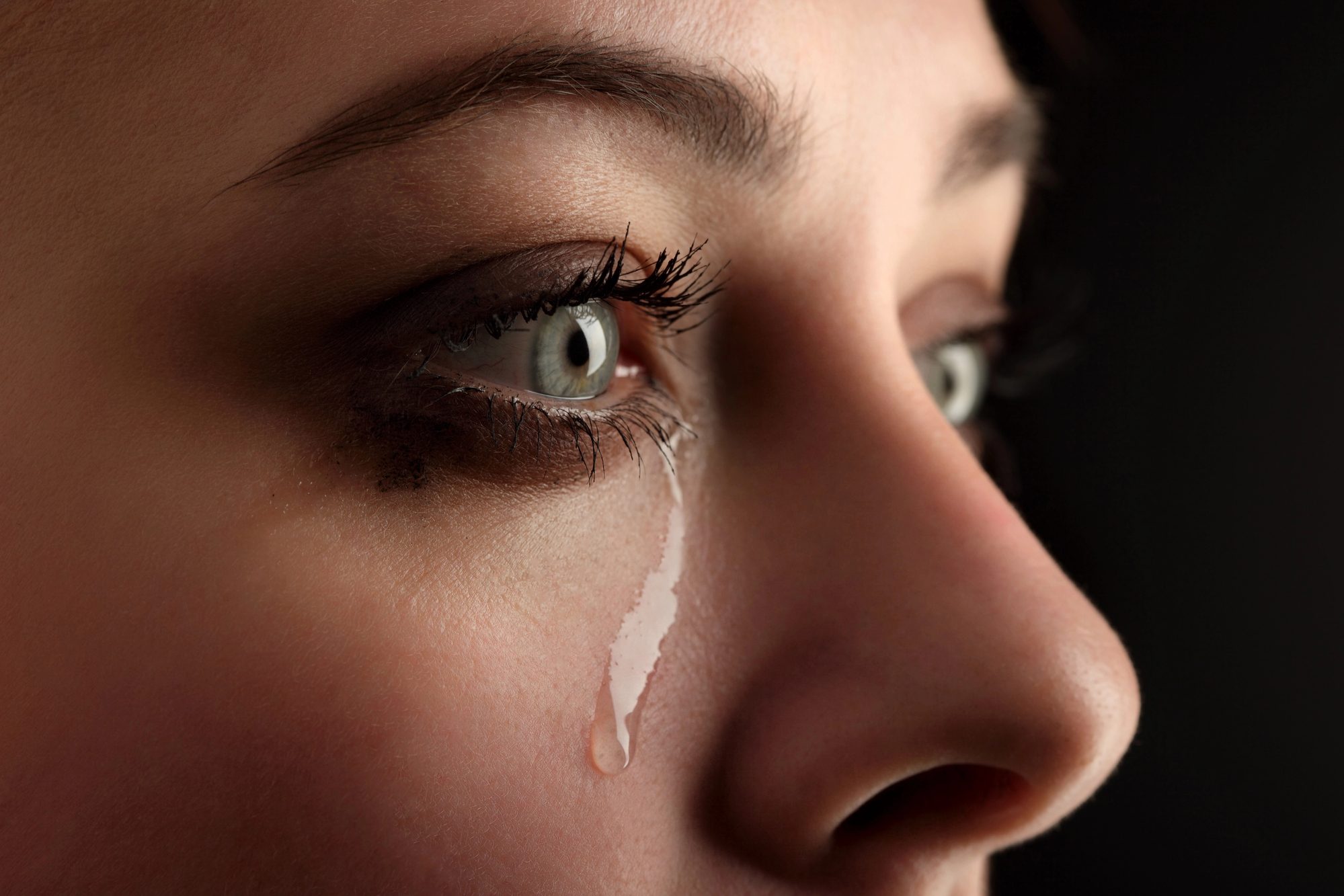Table Of Contents
- Section 1: An Introduction To Grief
- Section 2: The Models Of Grief
-
- 2.1: The Five Stages of Grief by Dr. Elisabeth Kübler-Ross and David Kessler
- 2.2: The Four Tasks of Mourning by Dr. J. William Worden
- 2.3: The Four Phases of Grief by Dr. John Bowlby and Dr. Colin Murray Parkes
- 2.4: Rando’s Six R Processes of Recovery by Dr. Therese Rando
- 2.5: Dual Process Model of Grief by Margaret Stoebe and Henk Schut
- 2.6: Model of Loss/Adaptation by Mardi Horowitz, M.D.
- Section 3: Self-Care Tips For Grieving
- Section 4: Common Myths About Grief
- Section 5: In Closing…
Editor’s note: this guide isn’t an instruction manual for grief. This is not “Grieving for Dummies,” nor is it a step-by-step path that you must follow.
While it discusses various models that describe the stages of grief that a person might potentially experience, these are provided to help you identify what you are feeling and to understand that it is normal to feel this way.
You may relate to some of what is written below, or you may not. It is okay either way.
Use this guide as a starting point from which to explore your own thoughts, feelings, and personal experience of grief.
Section 1: An Introduction To Grief
Grief is a powerful, often overwhelming, natural emotion that people experience at a time of great loss.
It may stem from the death of a loved one, a drastic change in a person’s life circumstances, a severe or terminal medical diagnosis, or any other sudden or great loss.
The person may find themselves feeling intense sadness or even total numbness as they try to go about their daily life, but are unable to because of the weight of the emotions that they are experiencing.
Grief is unique in that it is both intensely personal while being a universal experience. Everyone experiences it to some degree, though the intensity and scale may vary depending on what caused the grief and the griever’s emotional landscape.
It is incredibly important to not try to shove your or your loved one’s emotions into a neat little box to try to make them easy to understand. People and their emotions are far too complicated for that, and you will only succeed in alienating and angering those who are grieving.
The following guide is meant to give you an overview of different types of grief, experiences and symptoms surrounding grief, models for grieving, some tips and strategies for coping, as well as debunking some common myths about grief.
Let’s start with the different types of grief that a person can experience.
1.1: The Different Types Of Grief
Grief can manifest in different ways depending on the person. It may affect a person physically, socially, behaviorally, or cognitively by changing behaviors and their ability to function.
Normal grief – Normal grief should not be considered lesser in any way. It’s simply the name chosen to indicate the type of grief that one would expect a person to go through when faced with a loss.
A person experiencing normal grief will be processing their emotions and moving toward accepting the loss, with the intensity receding, while still being able to maintain their life.
No grief should be considered unimportant or less than another. The pain of loss is real and significant.
Anticipatory grief – A person may experience anticipatory grief when they are met with a debilitating diagnosis for themselves or a loved one.
Confusion and guilt often accompany anticipatory grief because the person is still alive.
It is a type of mourning for plans that were previously laid or expected and the emotions surrounding the loss of that long-term trajectory and the person’s well-being.
This is the type of grief typically associated with things like a terminal illness diagnosis.
Complicated grief – Complicated grief is also known as traumatic or prolonged grief.
A person may be experiencing complicated grief if they are in an extended state of grief that impairs their ability to regularly conduct their life.
They may exhibit seemingly unrelated behaviors and emotions, such as deep guilt, self-destructiveness, suicidal or violent thoughts, drastic lifestyle changes, or substance abuse.
This can result from the person avoiding their grief and not allowing themselves to feel the emotions that they need to feel in order to recover.
Disenfranchised grief – Disenfranchised grief is more ambiguous and may relate to losing someone or something that people may not regularly associate with grief, such as a casual friend, coworker, ex-spouse, or pets.
It may also include the kind of decline associated with chronic illness in a loved one, such as paralysis or dementia.
This type of grief stems from other people not placing due importance on a person’s grief, telling them that it’s not that bad or they should just suck it up and deal with it.
Chronic grief – A person experiencing chronic grief may exhibit signs typically associated with severe depression, such as persistent feelings of hopelessness, numbness, and sadness.
The griever may actively avoid situations that remind them of their loss, not believe the loss occurred, or even have core tenets of their belief system called into question because of the loss.
Chronic grief can evolve into substance abuse, self-harm, suicidal thoughts, and clinical depression if left unaddressed.
Cumulative grief – Cumulative grief may occur if a person is struck with multiple tragedies in a short time period where they do not have appropriate time to properly grieve each loss.
Masked grief – Grief may manifest in atypical ways, such as physical symptoms or out of character behaviors. This is known as masked grief. The griever often does not know that the changes are related to their grief.
Distorted grief – A griever may experience severe guilt or anger related to the loss that results in behavioral changes, hostility, self-destructive and risky behaviors, substance abuse, or self-harm.
Exaggerated grief – This type of grief intensifies what would be considered normal grief responses. It may grow in intensity as time carries on.
The person may exhibit self-harm, suicidal tendencies, other risky behavior, substance abuse, nightmares, and exaggerated fears. This amplified form of grief may also cause latent psychiatric disorders to emerge.
Inhibited grief – Many people do not feel comfortable exhibiting their grief, so they keep it quiet and to themselves.
This, in itself, isn’t necessarily a bad thing as long as they are still taking the time to grieve in their own way.
It becomes a bad thing when the person doesn’t allow themselves to grieve at all, which can make their grief much worse and harder to cope with as time goes on.
Collective grief – A collective grief is that of a group, such as when a tragedy strikes a community or a public figure dies.
Abbreviated grief – A person who experiences a loss may find something that fills the void that was left by that loss, causing them to experience abbreviated grief.
This may also occur when the person has witnessed a slow decline of a loved one, knew an end was coming, and had experienced anticipatory grief. The grief they will experience after the loved one has passed on is abbreviated grief.
Absent grief – Absent grief happens when someone does not acknowledge a loss and shows no signs of grief. This may happen due to shock or deep denial.
Secondary loss – A secondary loss may cause grief in a survivor. Secondary losses are the things that are indirectly lost because of a tragedy.
The death of a spouse may mean the loss of income, loss of one’s home, loss of one’s identity, and loss for whatever plans the couple had for the future. These additional losses often need to be mourned as well.
Section 2: The Models Of Grief
Over the years, grief has been studied by numerous people trying to make sense of the overall experience.
Those studies have given the world different models of grief that try to serve as a general guide to the related emotions and processes.
All models of grief suffer from the same fundamental flaw – that it is impossible to narrowly define the human experience through clinical categorizations and words.
Everyone experiences grief differently. Everyone has different perspectives on what they feel grief is or is not. Some people view negative experiences with more or less severity than others.
Thus, the models can really only ever be looked at as a general rule of thumb and nothing more.
This guide will briefly cover six different models for grief, all of which have their own merits and flaws. Remember: there is no definitive model that applies to every person or situation.
And, further research and advances in studies related to grief and bereavement hold that many people do not experience grief in a way that negatively impacts their ability to conduct their life, thus no model fits them because they do not pass through any stages in a tangible way.
2.1: The Five Stages of Grief by Dr. Elisabeth Kübler-Ross and David Kessler
The Kübler-Ross model did not originally apply to grief for a loss. Dr. Kübler-Ross developed the model to make sense of the emotional process of a person accepting that they were dying, as much of her work involved the terminally ill, and was presented that way in her 1969 book, On Death and Dying.
It wasn’t until much later that she acknowledged that her model may also apply to how people deal with grief and tragedy.
The model gained mainstream traction and eventually became a fixture in pop psychology.
The Kübler-Ross model posits that a person experiencing grief will pass through five stages, in no particular order – denial, anger, bargaining, depression, acceptance.
Denial
Denial is generally considered to be the first of the five stages of grief. It may take the form of shock and a lack of acceptance for whatever tragedy we may be experiencing. The person may feel numb, like they can’t go on, or don’t want to go on.
It is thought that denial helps blunt the initial onslaught of pain associated with a loss, so that the mind can accept the loss and work through the associated emotions at its own pace.
Anger
Anger provides a valuable anchor and structure in what is a chaotic time.
The initial impact of a loss can leave a person feeling aimless and without any foundation. A grieving person may find their anger directed in any number of different directions, and that’s okay.
It’s often just part of the process of coming to terms with an unexpected loss. It’s important to allow oneself to feel their anger, because eventually it will give way to other processing emotions.
Bargaining
A person may find themselves bargaining to try to make sense with their loss, to try to preserve their life as they previously knew it.
This may come in the form of trying to bargain with a higher power if one has spiritual leanings (“God, please spare my child and I will…”) or with oneself (“I’ll do everything to be a better wife if my spouse will just pull through this.”)
Bargaining is a natural response for a person who is working toward coming to terms with a change in their life.
Depression
A sadness as deep as depression may be felt for the loss. This sadness isn’t necessarily an indication of mental illness, but is another natural response to a great loss.
The person may withdraw, feel alone and isolated, and wonder if there is any point to continuing on.
This type of depression is not something that is going to be navigated or fixed, though the response may be to try to fix it.
Allowing oneself to feel their sadness, a deep depression, will let them continue on their journey toward acceptance.
Acceptance
Acceptance is often confused with feeling alright with a loss. Most people never feel okay with a serious loss.
Acceptance is more that we learn to function and move forward, even with the gaping hole left in our life.
It allows us to pick up the pieces that are left and carry them forward with us into the future, moving on to a point where we start having more good than bad days again.
It does not mean that we replace that which we lost, but that we allow ourselves to forge new connections and continue to experience life.
Thanks to the mainstream embrace of the Kübler-Ross model, others have spun off similar models that alter Dr. Kübler-Ross’s original work. The most popular of these is the Seven Stages of Grief, in which an unknown person added a couple of additional steps (which often vary depending which source you refer to).
It does not appear that this altered model emerged from any accredited person or institution.
2.2: The Four Tasks of Mourning by Dr. J. William Worden
A limitation of the Kübler-Ross model is that it postulates what a person who is grieving might be going through, but does not address how the person can manage the pain and continue on their healing journey.
Dr. J. William Worden suggested that there are Four Tasks of Mourning that a person should complete to reach a point of balance with their grief.
The four tasks are not linear, not necessarily bound to any timeline, and are subjective depending on the circumstances. These tasks generally apply to the death of a loved one.
Task One – Accept the reality of the loss.
Worden believed that accepting the reality of the loss is the foundation of all future healing.
A person who is struggling to accept the reality of a loss might participate in activities that reaffirm that the loss did actually occur.
As an example, if a loved one died, viewing the body or helping to plan the funeral may help the person accept that the loss occurred.
Task Two – Process your grief and pain.
An infinite number of ways exist for a person to process their own grief and pain.
There is no real wrong answer so long as the person’s actions help them actually process, and are not used as an escape from their new reality.
Some people need to just talk it out, others need more focused therapy, some may use actions and activities to help navigate and cope – such as volunteer work with a group related to their trauma.
Task Three – Adjust to the world without the loved one in it.
The death of a loved one will bring change to a person’s life. Embracing those changes and pushing forward can help the griever come to terms with the loss.
That may mean doing things like changing living situations, returning to work, and developing new future plans without their loved one.
The absence of the deceased can impact a person in numerous, unexpected ways. The sooner they can start to make those adjustments, the easier it will be for them to start on their new life path.
Task Four – Finding a way to maintain a connection to the person who died while embarking on your own life.
The fourth stage involves the survivor finding a way to retain some emotional connection with their loved one who died, while being able to move forward and conduct their own life.
It is not about forgetting or letting go of the deceased loved one, just not having that pain front and center, dominating the survivor’s life and well-being.
Worden heavily emphasized that there is no reasonable time frame for someone to work through these four tasks. Some people could navigate them quickly, others may take months or years to get through them.
People experience loss in a number of different ways and intensities, so the best option is to be patient as the survivor walks their path.
2.3: The Four Phases of Grief by Dr. John Bowlby and Dr. Colin Murray Parkes
Predating the Kübler-Ross five stages model, the Four Phases model by Bowlby and Parkes was largely inspired and derived from Bowlby’s pioneering work in attachment theory with children.
Dr. Bowlby’s interest was in troubled youth and what family circumstances shaped healthy and unhealthy development in children.
He later took his work on attachment theory and applied it to grief and bereavement, positing that grief was a natural result of having a loving attachment broken.
Bowlby would contribute most of the theory and three of the phases, while Parkes would eventually smooth out the rest.
Phase One – Shock and numbness.
In this phase, those grieving feel that the loss is not real, that the loss is impossible to accept. The person may experience physical symptoms which they may or may not relate to their grief.
A person grieving who does not work through this phase will experience depression-like symptoms that prevent them from advancing through the phases.
Phase Two – Yearning and searching.
This is the phase in which the grieving is aware of the loss of their loved one and will be looking for ways to fill that void. They may be starting to realize that their future is going to look much different.
The person needs to advance through this phase to allow room for the possibility of a new and different future to grow without the pain of the loss completely dominating their existence.
Phase Three – Despair and disorganization.
In phase three, the grieving has accepted that their life has changed, that the future they previously imagined will not come to be.
The person may experience anger, hopelessness, despair, anxiety, and questioning as they sort through these realizations.
Life may feel like it will never improve, be good, or worthwhile without their deceased loved one. These feelings may persist if they do not find a way to navigate this phase.
Phase Four – Reorganization and recovery.
Faith in life and happiness start to return in phase four. The grieving may establish new patterns in life, new relationships, new connections, and start to rebuild.
They may come to realize that life can still be positive and good, even with the loss that they carry with them.
The weight of the load gets lighter and though the pain never completely disappears, it stops dominating the person’s thoughts and emotions.
Many grief theorists, including Dr. Kübler-Ross, were heavily influenced by Bowlby’s 1961 article, Processes of mourning, that appeared in the International Journal of Psychoanalysis.
2.4: Rando’s Six R Processes of Recovery by Dr. Therese Rando
To understand Dr. Rando’s Six R Processes of Recovery, one must be familiar with some distinctions in terminology, her three phases of mourning, and the six processes to work through those phases.
Dr. Rando differentiates grief from mourning. Grief is an involuntary emotional reaction to experiencing a loss. Mourning is a regular, active process of working through one’s grief to a point of acceptance and accommodation.
She believed that avoidance, confrontation, and accommodation are the three phases of mourning that one must work through.
Rando’s Six R Processes of Mourning fall within those three phases and allow the griever to reach the destination of their healing journey, that is, the point where the person’s grief is no longer overwhelming and they can conduct their life in a gainful, meaningful way.
Process 1 – Recognizing the loss (Avoidance)
The grieving must first acknowledge and understand the death of their loved one.
Process 2 – Reacting to the separation (Confrontation)
The grieving must experience the emotions associated with the loss, including identifying, feeling, accepting, and expressing those emotions in a way that makes sense for the grieving. This process also includes reacting to any secondary losses associated with the primary loss.
Process 3 – Recollect and re-experience (Confrontation)
This process allows the grieving to review and remember not only the deceased, but work through any emotions that may have been lingering between them before the death.
Process 4 – Relinquishing old attachments (Confrontation)
The grieving will need to let go of their attachments to the life that they had planned with the deceased still present. This does not mean that they forget or leave behind the deceased, just that they let go of the present and future that they had imagined with the person.
Process 5 – Readjusting (Accommodation)
A process of readjustment allows the grieving to start moving forward in their new life, incorporating the old by developing a different relationship with the deceased, allowing them to take on new perspectives of the world and find their new identity.
Process 6 – Reinvesting (Accommodation)
The process of reinvesting is the grieving stepping out and into their new life, investing in new relationships and goals.
Dr. Rando believed that completing these six processes over the course of months or years would allow the grieving to move forward in their life.
She specifically believed that it was important for the grieving to understand what caused the loss so that they could accept it. That can be exceptionally difficult with deaths that may not make rational sense, like an overdose or suicide.
2.5: Dual Process Model of Grief by Margaret Stoebe and Henk Schut
The Dual Process Model of Grief is less about finding a way to navigate grief, and more about understanding how a person experiences and processes grief in relation to the death of a loved one.
The model states that the grieving person will cycle between loss-oriented responses and restoration-oriented responses as they work through the healing process.
Loss-oriented responses are what people typically think of when they think of grief. They may include sadness, crying, emptiness, thinking about one’s loved one, and the desire to withdraw from the world.
Restoration-oriented responses involve starting to fill the gaps that the deceased loved one left behind. That may include things like learning how to manage finances, taking on important tasks and roles that the loved one served in the relationship, form new relationships, and experience new things.
The important factor of this model is that it sets some expectations for allowing the griever to navigate the process.
Yes, there will be deep, loss-oriented responses where they may find it difficult to function in their everyday life.
However, they can take some solace in knowing that it is part of the process, that it is a cycle, and they will eventually cycle back to restoration-oriented responses.
A grieving person will typically follow the cycle back and forth as they are grieving until they reach a place of healing.
2.6: Model of Loss/Adaptation by Mardi Horowitz, M.D.
The Model of Loss/Adaptation by Mardi Horowitz, M.D. was created to better describe the emotions, patterns, and process of the different stages of grief.
Though it is experienced differently by people, this model can help serve as an overall guideline of what a grieving person may experience.
Outcry
The loss of a loved one can spark an initial outcry of emotion from a survivor. The outcry may be outward or inward.
Outward outcries are often an uncontrollable expression like an anguished scream, collapsing, or crying.
People may be feeling the emotions that are consistent with outward outcries, but stifle them to keep from being overwhelmed by them. This surge of initial emotions is temporary and typically does not last long.
Denial and Intrusion
After the outcry, a person will typically oscillate between denial and intrusion.
In the context of this model, denial involves activities that allow the person to not confront the loss that they experienced. That may be things like throwing themselves into their work or taking on so much responsibility that they don’t have time to think about their loss.
The intrusion part is when the person is feeling the emotions related to the loss so strongly that they simply can’t ignore it. The grieving may feel guilty when they aren’t feeling the intensity of the loss, but that’s okay and is part of the overall process.
The cycle between denial and intrusion gives the person’s mind the ability to rest and reset as it navigates the pain.
Working Through
The more time passes, the longer the period of cycling between denial and intrusion.
The person spends less time thinking about the loss, the emotions relating to the loss start to level out and simmer down, and they become less overwhelming.
The person will be thinking about and processing their emotions surrounding their loss, and starting to work toward finding new ways to move forward and conduct their life without their loved one.
They may start to reengage in life, like seeking out new friendships and relationships, taking on new hobbies, or looking for more fulfilling activities to engage in.
Completion
It may take months or years, but eventually the person will reach a period of completion, in that they can now function with their loss.
That does not mean they are over the loss or leave it completely behind, it just means that the person can now function and engage in their life without the loss dominating their emotional landscape.
The person may still experience grief related to important parts of the relationship, like anniversaries, birthdays, a vacationing spot, or favorite restaurant. The grief they experience in the completion phase will usually be small and temporary.
You may also like (article continues below):
- How To Face Your Fear Of Death And Make Peace With Dying
- Getting Through Days When You Miss Someone You’ve Lost
- 9 Rules To Follow When Someone You Love Is Grieving
- Instead of “Sorry For Your Loss,” Express Your Condolences With These Phrases
Section 3: Self-Care Tips For Grieving
It is easy to slip into a period of depression and complacency when you are overwhelmed with grief.
One must strive to maintain good and healthy habits as much as they can, even while their mind might be journeying through a difficult place. In doing so, the person can minimize external challenges while they mourn their loss.
1. Be kind and patient with yourself.
The foundation of recovery and coping is patience. The process of grieving is not going to be a fast one.
Depending on the severity of the grief, it could take years for the pain to recede to the point where it does not dominate one’s life or thoughts. Grieving is a process that takes time.
2. Maintain healthy self-care practices.
Avoid falling into negative emotional coping behaviors. It’s easy to resort to emotional eating, oversleeping, or slip into substance and addiction as a means to cope.
Be aware of these pitfalls and strive to maintain a healthy lifestyle by eating healthy foods, drinking plenty of water, and adhering to a sleep schedule.
Regular check-ups with your doctor are also a good idea, because stress can weaken the immune system which may leave you more susceptible to illness.
3. Adopt or continue on exercise routines.
Regular exercise provides numerous benefits for not only keeping a person physically healthy, but also contributes to alleviating sadness or depression.
Even as little as a few walks per week can significantly improve physical and mental health. Be sure to consult with your doctor before embarking on or making drastic changes to an exercise routine.
4. Connect with other people.
Community is a powerful tool that allows people from different walks of life who are going through similar experiences to connect.
You can learn valuable coping mechanisms and perspectives from other people who have walked similar paths while both giving and receiving support from people that understand.
Local community support groups or therapy can both be valuable tools in the healing process.
Section 4: Common Myths About Grief
Myth – A person’s grief can easily fit into a predictable model.
The truth is that grief is an intensely personal experience that will differ from person to person. Some people will experience deep grief, others will not.
The models presented in this guide serve only as very general guidelines of what to possibly expect. The mental health professionals that use these types of models are educated and trained to understand that there is no simple, one-sized fits all solution to navigating the human condition.
Myth – Active recovery from grief means leaving a loss or lost loved one behind.
The purpose of grieving and mourning is not to leave a loss or loved one behind, but to come to an emotional place where the weight of the pain is not crippling or dominating one’s thoughts.
There will likely always be some pain regarding a severe loss. The difference is that the survivor is able to navigate the pain, continue to live their life, and move forward into new experiences and relationships.
Myth – Grief recovery should happen within a certain amount of time.
There is no time limit on grief recovery. It may take one person weeks, it may take another person years.
The time for grief recovery depends on a lot of different factors that are impossible to quantify in any reasonable fashion. One should always avoid imposing a timetable on anyone’s grief, including their own.
Myth – Grief isn’t worth feeling. A person should just suck it up and deal with it.
This is a horribly destructive myth that can give way to more severe issues like substance abuse, addiction, and clinical depression.
The idea that anyone should just suck up their grief and deal with it is a social stereotype that negatively impacts a person’s mental well-being, ability to cope, and heal from their loss.
Trying to run and hide from the grief always ends badly. It always catches up, sooner or later, sometimes years down the road. Everyone needs to know that it’s okay to feel grief, that it is a natural emotional response to a loss.
Myth – There is a grieving process or system that will be most efficient in helping a person mourn.
The recovery process is different for everyone. There is no one-size-fits-all solution. Grief counselors and therapists generally serve as guides to help the survivor navigate their emotions, set expectations, and facilitate forward movement. That can look different from person to person.
Section 5: In Closing…
The sharp sting of loss will be felt by every single person at some point. People will be struck by grief due to the general churn and progression of life.
Grief can stem from the loss of a career, death of a loved one or cherished pet, significant change in one’s ability to conduct their life, like a chronic illness or accident, or even the end of a relationship.
All that can we do is face our grief with as much strength and resolve as we can muster. At times, that won’t feel like much. There are times when the weight is so heavy that we feel like we can’t move forward.
That’s okay.
You don’t have to be continuously moving forward, but don’t run from it either. Sometimes a person just needs to pause for a rest.
Patience is the most important part of grieving or being present and compassionate for a grieving loved one. We must have patience not only for ourselves, but for the survivor to find their way through a very difficult time. We could all use a little more patience in our lives.
There does come a point where it makes sense to seek professional help. If the pain of loss is intense and debilitating, a grief counselor or certified mental health counselor can help the survivor navigate their path to recovery.
Don’t hesitate to seek help, or encourage your loved one to seek professional help, if someone is having a hard time coping with a loss.










